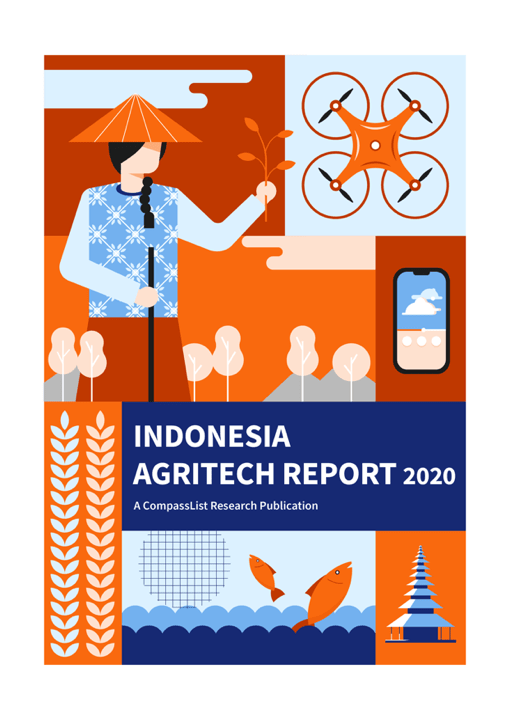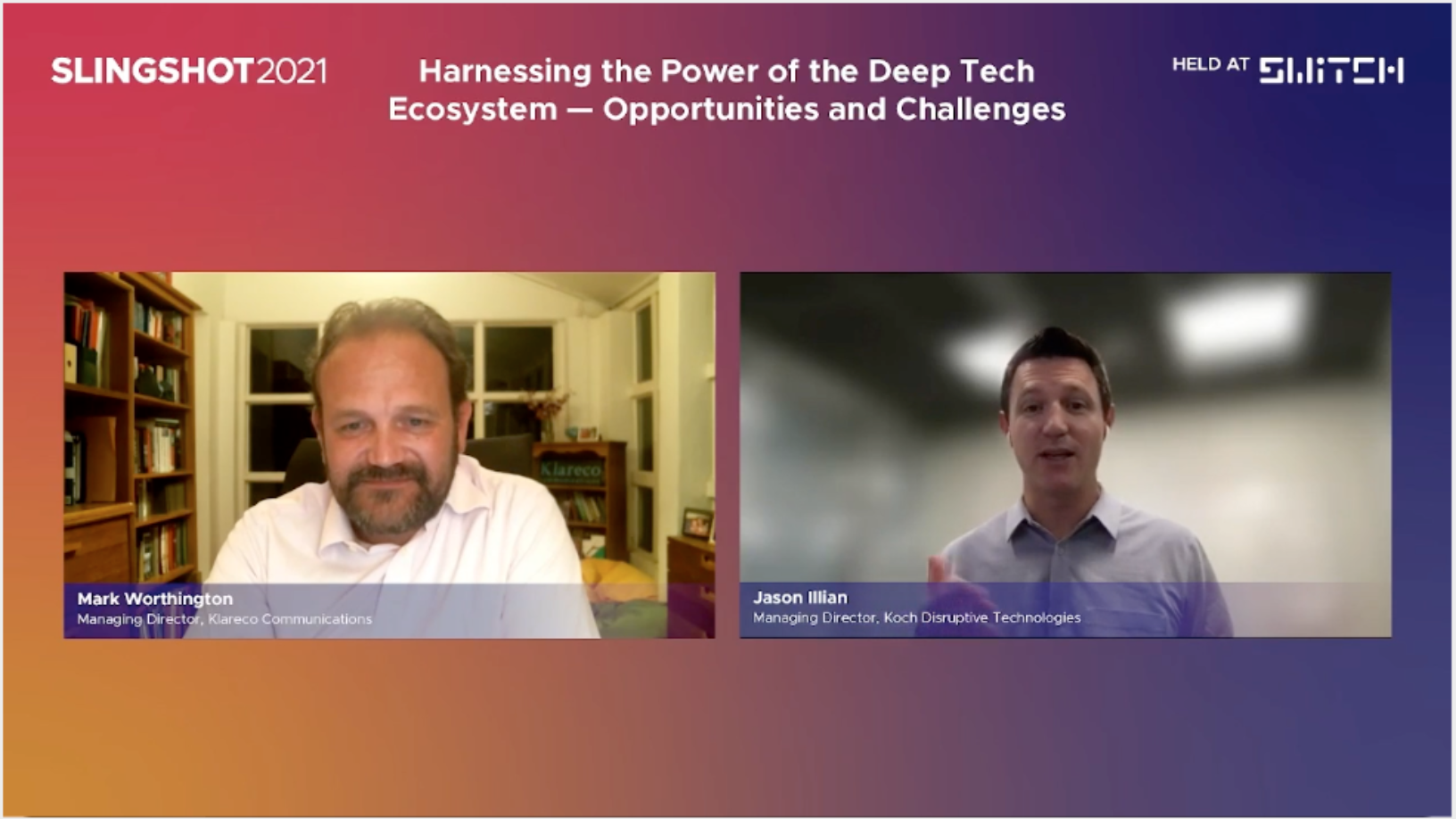About 350m smallholder farmers, or 78% of the global total, are located in Asia. This makes regenerative agriculture, which requires much coordination, a challenging task in the region. Early movers in this space have already begun to identify opportunities and make efforts to help Asia adopt regenerative agriculture practices.
The Nature Conservancy (TNC) is implementing regenerative agriculture-related projects in China. Silverstrand Capital, a Singapore-based family office, is focused on regenerative agriculture and other nature-based solutions, looking for catalytic impact in its investments. “The space is still nascent, and there's a big room for impact investors to play,” said its CIO and founder Kelvin Chiu.
Anastasia Volkova, CEO and co-founder of Regrow and winner of the 2020 Future Food Asia Award, sees regenerative agriculture as farming and grazing practices that reverse climate change by rebuilding soil organic matter and restoring degraded soil biodiversity, resulting in carbon drawdown and an improved water cycle.
During a panel discussion moderated by Volkova at the Future Food Asia 2021 virtual conference organized by ID Capital from June 7–10, Li Ying, Agriculture Director at TNC China, and Chiu shared their thoughts on the unique challenges facing regenerative agriculture in Asia and opportunities for startups and investors.
The following discussion has been edited for length and clarity.
Volkova: Where is regenerative agriculture in Asia?
Li Ying: Compared to the US, Europe and Australia, we face different challenges in China where the majority of farmers are smallholders owning very small pieces of land. In the past 10 years in China, more smallholders have been moving to cities for a living, leaving their land to other farmers, making regenerative agriculture activities more difficult. Because the land lease is short-term, only one or two years, it is hard for the tenants to manage the land consistently. That's why government policy should play a role in China, but current policies in the country favor intensive agriculture due to the pressure of food security.
Kelvin Chiu: It's worth highlighting, from an investor's point of view, the three major differences between the West and Asia when it comes to regenerative agriculture. The practices in the West usually involve broadacre cropping, regenerative grazing, high intensity and rotational grazing, but in Southeast Asia, there are fewer prairies or grasslands and not many cropping enterprises. We see much more agroforestry, rice and specialty crops such as nuts, coffee and cinnamon, and also a focus on seaweed.
In the West, lots of investments focus on farmland and farmland funds. In terms of business focus, there are a few on biological inputs, some on midstream like meat processing, and a lot on measuring and monitoring carbon and environmental outcomes. That's not quite the same in Asia because the land is not an option to buy, and the focus of companies is much more on consumer brands.
And finally, the majority of farmers are smallholders, and I think they own half-hectare land each, on average, compared to about 200 hectares in the US and 4,000 hectares in Australia. The land is much more fragmented [in Asia]. A lot more coordination is required, and technical assistance is still the key. You need manpower for training, and language can be a barrier to scale programs across different regions of Asia.
In Europe, you can see the governments invest through the Green Deal, through policies and subsidies. In the US, you can see investors from the private sector. Who is investing in Asia?
Chiu: The next major step in the West is getting institutional investors involved, such as pension funds. In Asia, because of the factors I've mentioned, I think there’s a big role for impact investors to play at the moment. Impact investors can bring three things. Firstly, a longer time horizon. Secondly, in terms of financial returns, you probably have to expect below-market returns to start with. More importantly, some of the startups here would want an investor to be more involved. The ecosystem is very young. There needs to be some incubation to make it more investable. These challenges are not unique to Asia but maybe especially the case in Asia. Right now, except for startups working on maybe seaweed and aquaculture, most of the deals are kind of in the $100,000–$500,000 range, perhaps a million tops. So the ability to deploy large amounts of capital isn't quite there yet, and hopefully, that changes in the future.
Ying, TNC works with a number of private sector players from the agrifood space. Are you seeing them investing in regenerative agriculture?
Li: We work with several companies from the food industry eager to invest in their supply chain because their sourcing regions are vulnerable to climate change. They want to build a more stable supply chain. And also, they invest in R&D, the innovative techniques for all their products. The companies work through the supply chain and the value chain. Knowing that most of the farmers are smallholders, they are now working on green finance, such as microloans for the smallholders and insurance to guarantee crop yields in the event of extreme weather.
Do you think microfinance will help Asia leapfrog into the wider adoption of regenerative agriculture?
Li: I think financing is the key for us to tackle the challenges in China. The smallholders earn very low incomes from their land. With microloans, we can help redirect their management towards regenerative agriculture. We call it green finance or green microloans. The private sector players use such tools quite often to support the farmers. Another thing I want to highlight is government policy, which can influence at a higher level, redirecting trends and creating opportunities for the private sector.
What do you think will start this leapfrog movement towards regenerative agriculture in Asia?
Chiu: We face a different set of problems compared to the West and require slightly different solutions. One thing that would help this region is accelerators with nature and biodiversity front and center and are focused on regenerative businesses. This will help startups tremendously with access to finance. In Asia, microfinancing is an opportunity. You have higher returns, and you need local connections. And what could be interesting for regenerative agriculture is a coupling of regenerative practices with microfinancing mechanisms. For example, if they do regenerative agriculture practices, you will get a higher product price and lower interest loans. So that could be an angle where financing can have a role to play.
With farmers migrating to cities, do you see a trend of land consolidation? Or are we going to be stuck with small pieces of land that cannot be managed consistently?
Chiu: The hurdles for regenerative agriculture in Asia are not smallholder farmers. [The hurdles are] commercial plantation enterprises and ecology is the last of their priorities. That's an area where we could focus on in Asia. In a sense, more smallholders could be an advantage for Asia. Smallholder farming requires more technical guidance and manpower on the ground, but smallholders are more closely connected to their land and care more about their local ecology. Financing and technical guidance can be powerful solutions in helping them adopt regenerative practices.
Kelvin, you possibly are looking for investments into farmland and other ecology. Where do you see the opportunities?
Chiu: There's a big interaction between conservation and agriculture in Asia. Right now, a lot of the conservation efforts are not tied to agriculture, but they can be. For example, instead of palm oil plantations, we could have multi-strategy agroforestry systems that sequester carbon and preserve biodiversity. In terms of conservation agriculture, a few good businesses have sprung up in the region. The most prominent one is IBIS Rice. Ibis is the Cambodian national bird living in the northern plains. The WCS [Wildlife Conservation Society, which launched IBIS Rice] has paid a 15% premium to farmers who harvest jasmine rice in the northern plains if they harvest once a year and allow the birds to thrive. This is an example of a regenerative enterprise that works in Asia.
I think Asia has an advantage in its massive biodiversity, and there's a lot at stake, like rain forests around the region in particular. We're seeing in ecosystem services an exponential growth in demand for nature-based offsets and not just regular carbon offsets but also carbon offsets with a biodiversity component. So that is something that is really getting stronger. Leveraging that for regenerative businesses in the region and taking into account the interaction between agriculture and conservation would be the key.
Ying, please share more about how to promote ecosystem opportunities to farmers. Shall we pay farmers for practices or outcomes? How are we providing the technical support to make it happen?
Li: Regenerative agriculture is about soil health. In China, soil health assessment tools are limited because most tools are for government evaluation, not for farmers. So we collaborate with Cornell University and China Agricultural University to develop tools that can help farmers understand and measure soil health. From there, they can see the benefits of adopting regenerative agriculture practices.
The ecosystem market is just a byproduct for farmers, especially for row crop farmers. The priority is to help the farmers understand that soil is important for their crops and incomes. And then, we can support them to measure the soil carbon, and the ecosystem market can offer incentives to them.
We are now working with government service centers, researching green subsidies in China. Currently, most of the subsidies have limited influence on regenerative agriculture or sustainable agricultural development. So we are trying to direct and reshape the subsidies to help farmers understand soil health and adopt regenerative agriculture practices.
Currently, many consider soil health or soil carbon as an outcome-driven payment for farmers. But smallholders in China or Asia own only a few acres of land, so the soil carbon cannot be measured by payment. Those practice-driven or oriented mechanisms might help. I have an example from Henan province in China. The local government wanted to try outcome-driven protocols. So they offered agriculture insurance to the farmers, incentivizing them to adopt best practices to improve soil health. After one year, the government measured the soil and didn’t see measurable improvement. Soil measurement is very time-consuming and costly. I would say outcome-driven protocols don’t work for smallholders.
If you could change one thing that you feel would really impact the adoption of regenerative agriculture in Asia, what would that be?
Li: I want to work with the private sector, helping them solve regional problems to improve regenerative agriculture.
Chiu: I am thinking about consumer awareness. Better awareness of where food comes from, different ways of farming, the industrialized method and its flaws and the negative externalities associated with it. The current alternative is a generative enterprise where you have positive externalities. Once that takes hold, people will be willing to pay more for higher quality and highly nutritious foods from generative enterprises.
CompassList is an official media partner of Future Food Asia 2021











